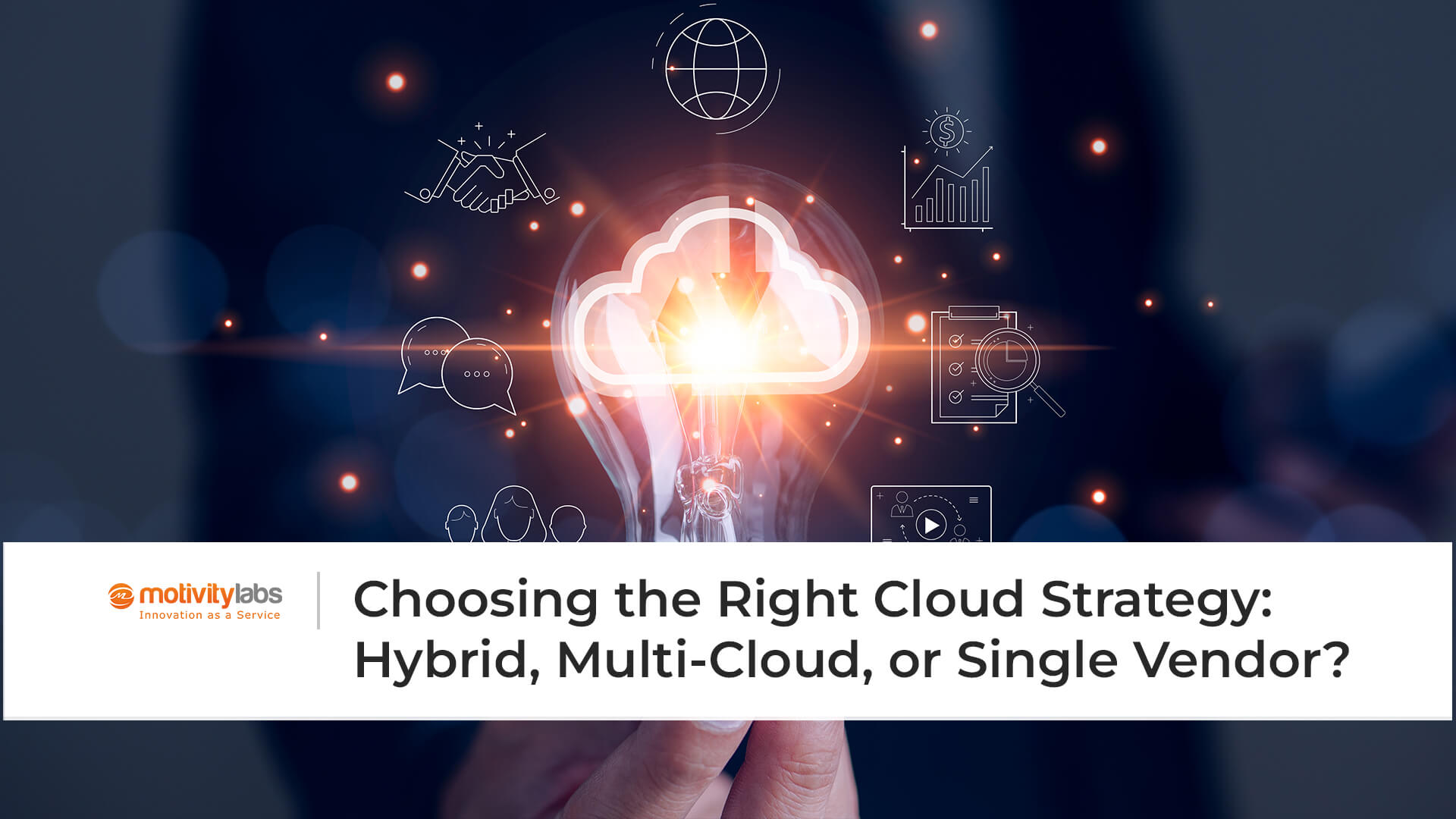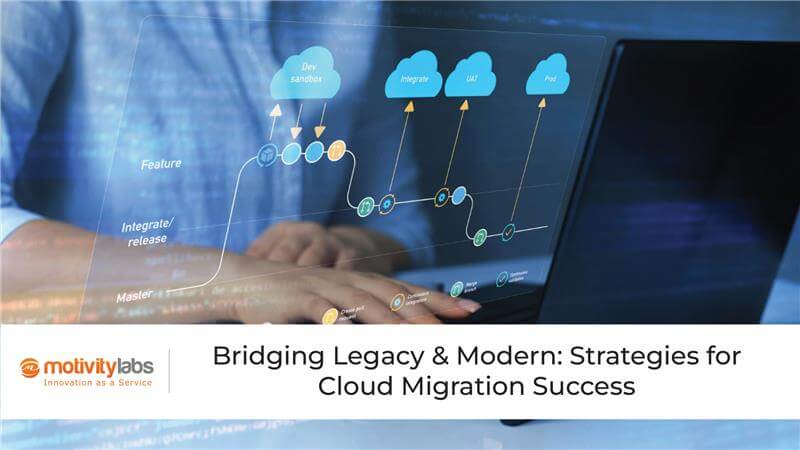Table of Contents
Hybrid vs. Multi-Cloud Strategies: Pros, Cons, and Best Practices
As digital transformation accelerates, the question for businesses is not whether to embrace the cloud. It is how to do it right. And in that “how,” two major contenders dominate the conversation: hybrid cloud and multi-cloud strategies.
While both sound like buzzwords, they represent two effective ways to build cloud infrastructure. But which one is right for your business? That depends on what you are trying to achieve. Whether it is flexibility, control, compliance, innovation, or all of the above.
Let us explore the distinctions and nuances of hybrid cloud and multi-cloud strategies.
First, What’s the Difference?
It is essential to understand the foundational models when adopting cloud solutions. The terms “hybrid cloud” and “multi-cloud” are often used interchangeably. They, however, represent different architectural approaches. Each comes with its own set of benefits and use cases.
Before you pick sides, you need to understand the players.
Hybrid Cloud
A hybrid cloud environment blends on-premises infrastructure (your servers) with public cloud services (like AWS, Azure, or Google Cloud). Think of it as a bridge, giving you control of in-house systems with the scale of the cloud.
Multi-Cloud
A multi-cloud setup means using two or more public cloud providers. This approach is often chosen to avoid vendor lock-in, boost redundancy, or capitalize on each provider’s unique features. There is no private data center involved, just multiple cloud players working together.
The Pros and Cons: Hybrid vs. Multi-Cloud
Choosing between hybrid and multi-cloud is not just a matter of preference. It is a strategic decision that impacts performance, security, scalability, and cost. Each approach offers unique advantages and presents its own set of challenges. Understanding these can help organizations align their cloud infrastructure with business goals.
Let us weigh each side, starting with the good stuff.
Strategic Benefits of Implementing Hybrid Cloud
A hybrid cloud strategy offers organizations a balanced approach to managing workloads by combining the control of on-premises infrastructure with the scalability of public cloud services. One of its most compelling advantages is data control. It allows sensitive or regulated data to remain on-site to meet compliance requirements, while less critical operations can be offloaded to the cloud.
Legacy integration is another key benefit. It enables companies to continue using existing systems that may not be cloud-compatible while gradually transitioning to modern solutions. The flexibility of hybrid environments empowers businesses to scale resources on demand without investing heavily in physical infrastructure. Additionally, hybrid models enhance disaster recovery strategies by keeping backups in the cloud. This ensures that critical operations can quickly resume during system failures or unexpected disruptions.
Challenges of the Hybrid Cloud Approach
While the hybrid cloud offers flexibility and control, it also introduces a level of complexity that can be challenging to manage. Maintaining cloud-based and on-premises environments requires robust IT expertise and dedicated resources.
Cost is another consideration; operating a physical data center while investing in cloud infrastructure can lead to substantial expenses if not carefully optimized. Additionally, security gaps may arise due to the increased number of components and connection points. This makes it essential to enforce stringent, unified security protocols across the entire architecture.
Strategic Advantages of Adopting Multi-Cloud
Multi-cloud strategies are rapidly gaining popularity due to their ability to mitigate risks and optimize cloud infrastructure. One of the most significant benefits is the absence of vendor lock-in. By using multiple cloud providers, businesses can avoid dependency on a single vendor, which helps spread risk and increase flexibility. With multi-cloud, organizations can access the best offerings from different providers. For example, they might leverage Google’s advanced AI capabilities while using AWS for its superior storage solutions.
The global reach of multi-cloud environments allows organizations to tap into various cloud providers’ global data centers, improving performance for users across different regions. Furthermore, redundancy is a key advantage: if one cloud provider experiences downtime, others can pick up the slack, ensuring continued uptime and reliable service delivery.
Considerations and Challenges of Multi-Cloud
While multi-cloud strategies offer flexibility and resilience, they also introduce a unique set of challenges. Integration overload is a common issue, as managing different APIs, security protocols, and service-level agreements requires significant coordination and expertise.
Data movement between cloud platforms can also become slow and costly, particularly if not carefully planned and optimized. Additionally, skill shortages may arise since teams must be proficient across multiple cloud platforms. This demand for deep, cross-platform knowledge can place considerable strain on internal resources.
The Big Question: Which One Should You Choose?
With over 90% of businesses operating in hybrid or multi-cloud environments, choosing the right approach is no longer optional. It is strategic. There is no one-size-fits-all answer here. The right approach depends on your company’s needs, goals, and growth stage. Ask yourself:
- Do you have legacy systems that cannot be fully moved to the cloud yet? Go hybrid.
- Do you want to leverage the best services from different providers? Go multi-cloud.
- Are you in a regulated industry with strict data residency rules? Lean hybrid.
- Do you want maximum uptime with failovers across clouds? Think multi-cloud.
- Do you need to optimize cost by avoiding vendor traps? Multi-cloud gives flexibility.
It is essential to note that these approaches are not mutually exclusive. Some organizations may begin with a hybrid cloud model and gradually transition to a multi-cloud setup, or they may take the opposite approach.
Best Practices: Getting It Right from Day One
No matter which route you take, following best practices can make the difference between chaos and clarity.
Define Clear Objectives
Do not adopt hybrid or multi-cloud solutions just because they are trendy. Identify your goals, whether they are cost savings, resilience, agility, or compliance. Then, design your architecture to meet those objectives.
Invest in Cloud Governance
With multiple environments comes the need for serious governance. You need policies for:
- Resource provisioning
- Cost management
- Access control
- Data residency and compliance
Use tools like Azure Policy, AWS Organizations, or third-party platforms to manage it.
Prioritize Interoperability
Whether you are using private infrastructure or public clouds, your systems must communicate with each other seamlessly. APIs, containerization (like Kubernetes), and cloud-agnostic tools can help simplify things.
Monitor Costs Like a Hawk
One of the biggest cloud pitfalls is bill shock. Use FinOps tools and cloud-native cost trackers to monitor usage across environments and forecast spending accurately.
Plan for Security at Every Layer
Each cloud layer, including data, identity, and applications, requires protection. Set up unified threat detection, encryption policies, and regular audits across providers or environments.
Build a DevOps Culture
Hybrid and multi-cloud work best when DevOps is baked into your workflow. Automate deployments, testing, and monitoring to stay agile and reduce human error.
Train Your Teams
Whichever path you take, ensure your IT team has the training and certifications for that environment. Cloud fluency is a must.
Emerging Trends to Watch
As hybrid and multi-cloud strategies evolve, several trends are shaping the future:
- Edge Computing: Hybrid clouds are powering edge deployments for real-time processing at the source.
- AI-Driven Optimization: AI tools are helping optimize cloud spend, forecast capacity, and auto-remediate outages.
- Cloud-native Security Tools: Providers are releasing more advanced, integrated security solutions to ease multi-cloud stress.
Platform-as-a-Service (PaaS): Developers increasingly prefer PaaS to avoid infrastructure headaches altogether. It works beautifully across clouds.
Real Talk: Mistakes to Avoid
Even experienced teams can make mistakes. Here are a few common pitfalls to watch out for:
- Trying to lift and shift everything without optimizing for the cloud
- Assuming your team can manage multi-cloud integration without proper planning
- Overlooking cloud egress fees, which can significantly increase your costs when moving data
- Underestimating the differences in SLAs across cloud providers
Avoiding these mistakes will put you ahead of the curve.
It’s Not Just About the Cloud: It’s About Strategy
Hybrid and multi-cloud are not technologies. They are strategies. Advanced businesses do not simply jump in. Instead, they plan, test, monitor, and continuously evolve. That is where a trusted partner like Motivity Labs comes in.
Whether you are exploring hybrid cloud options to modernize your legacy systems or planning a multi-cloud rollout for maximum uptime and agility, Motivity Labs brings the expertise to do it right.
Their cloud consultants do not just tick boxes. They take the time to dig deep into clients’ infrastructure, workflows, and business goals to create a cloud journey that is tailored, scalable, and secure. With decades of combined experience across AWS, Azure, and Google Cloud, Motivity Labs ensures a smooth transition for clients. Whether hybrid or multi-cloud, their solutions are future-ready and cost-effective.
Motivity Labs is not just cloud-smart. They are cloud-strategic.
Hope this helps!



